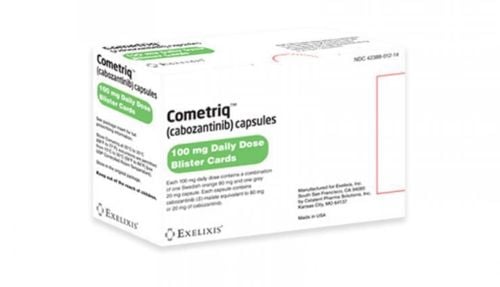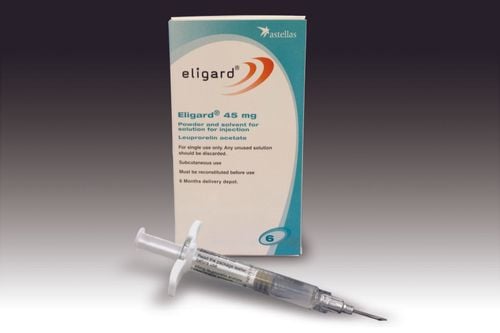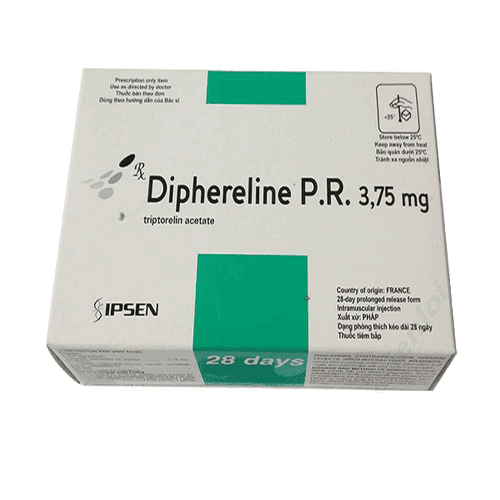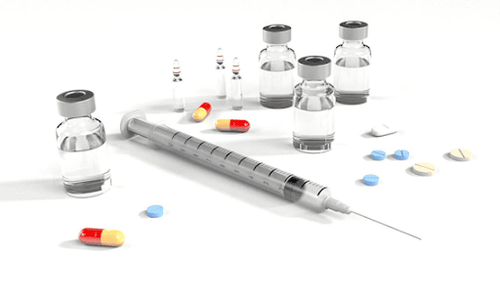This is an automatically translated article.
Prostate cancer is one of the most common cancers in men over 50 years old, it is the second leading cause of death after lung cancer. Like many other cancers, prostate cancer is treated with methods such as surgery, radiation, and chemotherapy. Each patient will have a specific treatment regimen, not all patients have the same treatment regimen.1. What is prostate cancer?
Prostate cancer is a malignant tumor that develops inside the prostate gland. The prostate gland is found only in men, it is located below the bladder, where semen is produced.
Prostate cancer is usually slow growing, but it can also be invasive and spread to other parts of the body, especially to bones and lymph nodes. It is estimated that up to 80% of men under the age of 80 have this disease, which is rare in men under the age of 50. To date, there has not been a complete statistical study on the incidence of prostate cancer in Vietnam. In some single studies, the rate of prostate cancer detected incidentally on pathological examination after surgical resection of benign prostatic hypertrophy was 7.2%.
Recently, the number of people visiting hospitals for prostate disease is increasing every year. However, prostate cancer is not really paid enough attention, patients are often detected at a late stage, which seriously affects treatment results.
2. Who should perform a radical prostatectomy?
Surgery is a common option in the treatment of prostate cancer that has not spread. The main type of surgery for this disease is a radical prostatectomy. With this type of surgery, the surgeon removes the entire prostate gland along with some surrounding tissue, including the seminal vesicles and some nearby lymph nodes.
Radical prostatectomy should be performed for male patients under 75 years of age with prostate cancer. Patients with a prognosis of at least 10 years of survival tend to get the most benefit from this surgery.
Before performing a radical prostatectomy, doctors will try to determine that prostate cancer has not spread outside the prostate gland. This can be assessed by biopsy results and PSA levels. In addition, if necessary, the doctor can further check for spread through CT scans, bone scans, MRI scans, and ultrasound.
If prostate cancer has not spread, your doctor may offer treatment options other than surgery. Other options include radiation therapy, hormone therapy, or perhaps just observing the prostate cancer over time. Because many cases of prostate cancer grow slowly. Depending on how quickly the cancer cells spread, the doctor will choose the right treatment method.
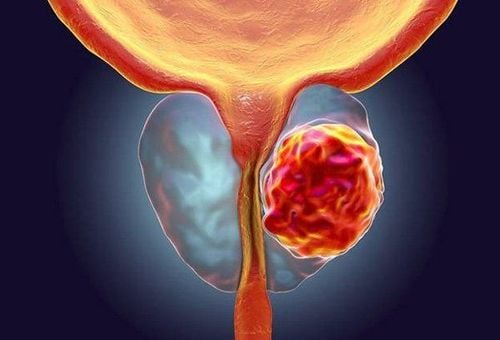
Ung thư tuyến tiền liệt thường phát triển chậm, nhưng nó cũng có thể xâm lấn, lan ra các phần khác của cơ thể
3. Types of prostate cancer surgery
The prostate gland is located just below the bladder and in front of the rectum. Surgeons have two options for accessing and removing the prostate gland during surgery:
Open prostatectomy. Minimally invasive surgical methods include: Laparoscopic prostatectomy and Robotic-assisted laparoscopic prostatectomy. 3.1. Open Prostatectomy Abdominal Approach Open prostatectomy is the traditional surgical approach. The surgeon will make an incision in the patient's lower abdomen from the navel to the pubic bone. The patient will receive general anesthesia or spinal or epidural anesthesia (lower body anesthesia) along with sedation during the surgery.
Through examination and laboratory test results, if the doctor judges that there is a possibility that the cancer has spread to the lymph nodes near the prostate gland, during surgery, some lymph nodes will be removed. blood in this area. The lymph nodes are then sent to a lab to see if they have cancer cells.
If cancer cells are found in any of the lymph nodes, the doctor may not continue with the prostatectomy. Because it's unlikely that prostate cancer can be cured with surgery, and the removal of the prostate gland can lead to many serious complications later on.
After the prostatectomy, while you are still under anesthesia, the doctor will put a catheter into the patient's penis to drain urine from the bladder out. This catheter is usually kept for 1 - 2 weeks until the incision is stable. The patient was able to urinate normally on his own after the catheter was removed.
The patient may need to stay in the hospital for a few days after surgery and limit activities for several weeks.
Perineal (perineal) approach
In this surgery, the doctor makes an incision in the skin between the anus and the scrotum (perineum). This method is less commonly used now because it is more likely to cause erection problems later on and cannot remove lymph nodes near the prostate.
But this is a method with a shorter surgical time compared to the transabdominal method. This method may be chosen if the patient is not worried about an erection and does not need to remove the surrounding lymph nodes. Perineal surgery can be less painful and recovery easier for the patient.
After surgery, the patient is also placed a urinary catheter to drain urine from the bladder out.
3.2. Laparoscopic radical prostatectomy Laparoscopic radical prostatectomy
For laparoscopic radical prostatectomy (LRP) the surgeon inserts special instruments through several small incision on the abdomen to remove the prostate gland. One of these devices will have a small video camera at the end, which allows the surgeon to see the inside of the patient's abdomen in detail.
Laparoscopic prostatectomy has a number of advantages over open surgery:
The patient loses less blood and is less painful. The hospital stay is shorter, usually no more than a day after surgery, before the patient can go home. Faster recovery time. The urinary catheter needs to stay in place for a shorter time. The incidence of complications with laparoscopic radical prostatectomy, such as erection problems and urinary incontinence, appears to be similar to that of open surgery. Recovery of bladder control may be a bit slower.
More studies are needed to compare complications and recurrence between open and laparoscopic prostatectomy. But the success of either procedure seems to be largely determined by the surgeon's experience and skill.
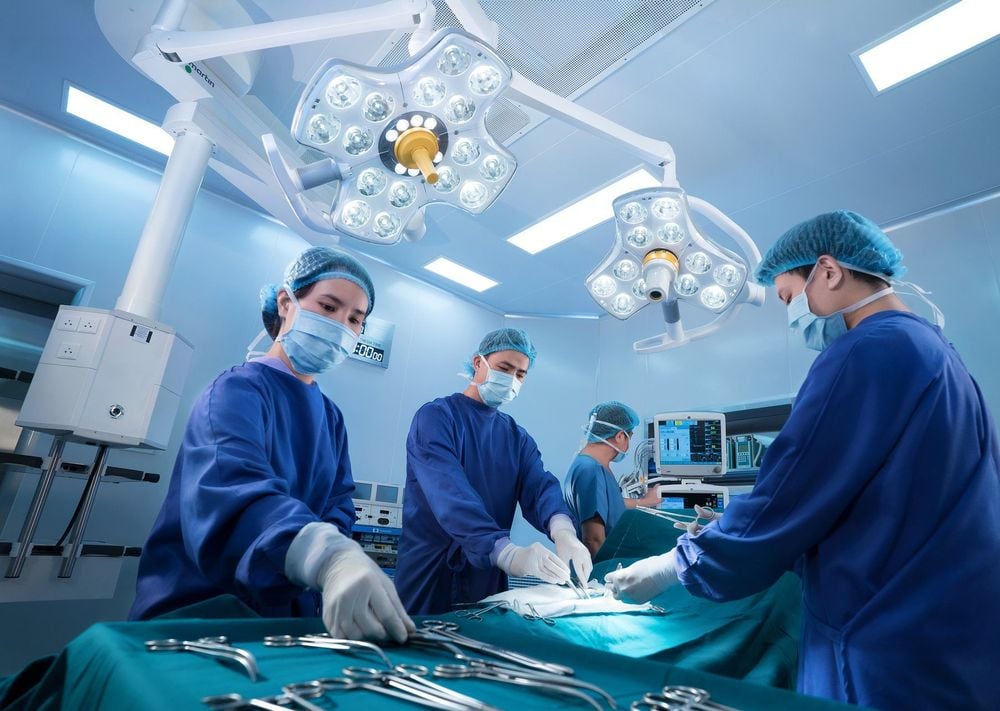
Cắt tuyến tiền liệt qua nội soi có nhiều ưu điểm so với phương pháp mổ mở
Robotic-assisted laparoscopic radical prostatectomy
Robotic-assisted laparoscopic radical prostatectomy is a laparoscopic surgery performed using a robotic system. The surgeon will sit at a console in the operating room and move the robotic arms to operate through a small incision in the abdomen.
Robotic prostatectomy has a number of advantages such as:
Less pain for the patient, less blood loss. Faster recovery time. However, when it comes to the complications that patients are most concerned about such as urinary problems, erection problems, it does not seem to be different from other prostatectomy methods.
For surgeons, robotic systems can provide greater maneuverability and precision when moving instruments than standard laparoscopic surgery. However, the success factor is still based on the experience and skill of the surgeon.
4. Possible risks during prostatectomy
With any prostatectomy, like any surgery, there are certain risks involved. Problems that may occur during or shortly after surgery include:
Patient reacts to anesthesia Patient has bleeding after surgery. Blood clots in the legs or lungs. Damage to nearby organs. Infection at the surgical site. The risk that part of the intestine may be injured during surgery is rare. This can lead to an infection in the abdomen and surgery may be required to correct the condition. Intestinal injury is more common with laparoscopic and robotic surgery than with open surgery.
If lymph nodes are removed, lymph fluid may be present, which may need to be drained. In extremely rare cases, patients can die from complications of prostate cancer surgery.

Sau khi phẫu thuật bệnh nhân có thể sẽ phản ứng với thuốc mê
5. Complications of prostate cancer surgery
Complications can occur with radical prostatectomy such as urinary incontinence, erectile dysfunction, etc. These complications can also occur with cancer treatments. other prostate cancer.
5.1. Urinary incontinence The patient may not be able to control his or her urine or may leak or leak urine. This affects not only the physical body but also the mental health of the patient. There are many types of urinary incontinence including:
Stress incontinence: the patient may leak urine when coughing, laughing, sneezing or exercising. This is the most common type of complication after prostate surgery. This is usually a problem with the valve that holds urine in the bladder (bladder sphincter). Surgery can either directly damage the bladder sphincter or damage the nerves that supply this muscle. Urinary incontinence: the patient has difficulty emptying the bladder. They urinate longer and the urine flows with less force. This condition is usually caused by a blockage or narrowing of the urethral passage by scar tissue at the surgical site. Urinary incontinence: the patient has a sudden need to urinate. This happens when the bladder becomes too sensitive to stretching as it fills with urine. Urinary incontinence: rarely, the patient completely loses control of his or her urine. After prostate cancer surgery, bladder control is normal, usually returning within weeks to months. Recovery is often slow, and doctors cannot predict exactly which patients will experience these problems. In general, older patients tend to have more urinary incontinence problems than younger patients.
5.2. Erectile dysfunction This means that the patient cannot get an erection to perform sexual intercourse. Penile erection is controlled by two small bundles of nerves that run on either side of the prostate gland.
If the patient is still able to have an erection of the penis before surgery, the doctor will try not to damage these nerves, this is known as the nerve reduction approach. But if the cancer is growing into or very close to the nerves, your doctor will need to remove them. If both nerves are removed, the patient will not be able to get an erection spontaneously, but can do it using some assistive devices. If the nerve is only cut on one side, the patient will still be able to have an erection, but the chances are less than if it were not removed. If both nerve bundles are not removed, the patient can have a normal erection at some point after surgery. The patient's erection ability after surgery depends on age, preoperative erection ability and extent of nerve damage.
In fact, it can take a few months to 2 years for a patient to get an erection again. During the first few months, the patient may not be able to have an erection naturally and must use medication or some other treatment.
5.3. Changes in orgasm After prostatectomy, orgasm can still be achieved, but no semen is ejaculated. This is because the glands that make most of the fluid for semen, the seminal vesicles and prostate, and the spermatic ducts (vas deferens) have been removed. In some patients orgasms become less intense or disappear altogether. Less commonly, patients experience pain during orgasm.
5.4. Loss of fertility A radical removal of the prostate gland, both of the vas deferens - the passage between the testicles (where sperm are made) and the urethra (where sperm exit the body). The patient's testicles still make sperm, but they can't reach the penis to ejaculate as usual. This means that a man can no longer be a father in the natural way. However, usually patients with prostate cancer are older, so this is not a serious problem. But if you're concerned about this, you can talk to your doctor about storing sperm in a sperm bank before surgery.
5.5. Lymphedema This is a rare but possible complication when many lymph nodes around the prostate gland are removed. Lymph nodes normally provide a route for fluid back to the heart from areas of the body. When the lymph nodes are removed, fluid can accumulate in the legs or genital area over time, causing swelling and pain. Lymphedema can be treated with physical therapy, although it may not go away completely.
5.6. Change in penis length Prostatectomy can reduce the length of the penis. This may be due to the shortening of the urethra when part of it is removed along with the prostate.
5.7. Inguinal hernia Surgery to remove the prostate gland increases a man's risk of developing an inguinal hernia in the future.

Phẫu thuật cắt tuyến tiền liệt có thể tác động làm giảm chiều dài dương vật
Vinmec International Hospital Radiation Center has routinely performed radiotherapy for prostate cancer on the most advanced Clinac iX accelerator system (Varian Company, USA) today. Many patients achieve satisfactory results with few side effects, often making a full recovery after treatment. The clinics are fully equipped with high-tech and standard equipment, ensuring that patients are monitored, examined, and cared for comprehensively before, during and after radiation therapy.
Besides, in order to improve service quality as well as bring convenience to customers, Vinmec now also deploys Prostate Cancer Intensive Care Package. Customers who need advice on diagnosis and treatment of prostate cancer can come to Vinmec International General Hospital
With equipped facilities, advanced and modern medical equipment and a team of Doctor with deep expertise and extensive experience. At Vinmec, the examination process becomes quick with accurate results, saving costs and time for patients.
Please dial HOTLINE for more information or register for an appointment HERE. Download MyVinmec app to make appointments faster and to manage your bookings easily.
References: webmd.com, cancer.org
MORE:
Immunotherapy for prostate cancer Treatment for prostate cancer that has metastasized to bone Options for prostate cancer treatment paralysis





